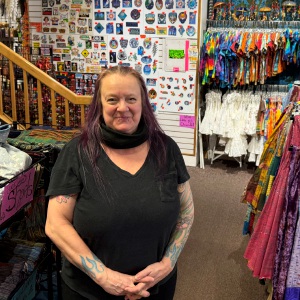Amherst may kick in $800K more for track project; will ask regional towns to contribute $411K

The track and field at Amherst Regional High School. gazette file photo
|
Published: 08-05-2024 2:09 PM
Modified: 08-05-2024 5:36 PM |
AMHERST — Another $800,000 in Community Preservation Act money is being recommended by Amherst officials so the $4.41 million plan to rebuild and reorient the Amherst Regional High School’s track and its interior field can proceed.
While Amherst’s Community Preservation Act Committee is unanimously recommending the additional appropriation, which will be subject to review by the Finance Committee and Town Council, schools Finance Director Douglas Slaughter is pledging to make CPA requests totaling $411,000 of Pelham, Leverett and Shutesbury, the other regional school member towns. In addition, the Regional School Committee will continue to pursue additional funding.
The CPA Committee took its vote July 29, even with concerns about the project costs and the burden on Amherst, so that the project can go out to bid in December or early January, and a contractor can begin work next spring. Option 3C, prepared by SLR Consulting of Agawam, features a north-south orientation, with eight lanes and a grass interior field that can be used for soccer, football, field hockey, lacrosse and ultimate. The project will create a similar size field to the west of the main facility.
“I’m a fan of the project — I want to see it get done, because I know it’s a now-or-never deal,” said CPA Committee Chairman Sam MacLeod.
Amherst may be contributing more than 80%, or more than its fair share, to the project, MacLeod said, but the committee’s recommendation will have to be supported by Town Council and the town’s Finance Committee, and could be reduced at some point.
Slaughter explained that the extra CPA money is needed to cover a shortfall in funding sources. The regional schools authorized debt totaling $1.5 million, while Amherst authorized $900,000 in free cash, as well as previously committing $957,500 in CPA funds. The private Hurricane Boosters has given $104,840 and Pelham committed $11,500 in CPA funds for design work.
School officials will seek substantially more from the smaller towns as a way of more balanced funding and reducing Amherst’s commitment. Slaughter said he will be asking Pelham for $99,000 more, for Leverett to come up with $176,000 and for Shutesbury to give $136,000. Those requests will be made this fall in advance of special Town Meetings or annual Town Meetings in the spring of 2025.
“I don’t have a sense of their capacity to make that kind of commitment,” Slaughter said.
Article continues after...
Yesterday's Most Read Articles
 ‘Delightful’ Northampton store shopping guide Jane Hertz, 88, seeking next gig
‘Delightful’ Northampton store shopping guide Jane Hertz, 88, seeking next gig
 ‘Whole campus’ approach: UMass working to help six students whose visas, status were revoked
‘Whole campus’ approach: UMass working to help six students whose visas, status were revoked
 Five UMass Amherst students have visas, student status revoked
Five UMass Amherst students have visas, student status revoked
 Amherst finance director to return to UMass
Amherst finance director to return to UMass
 ‘Hands Off’ protest: 5,000 people in half-dozen Hampshire County communities protest against Trump policies
‘Hands Off’ protest: 5,000 people in half-dozen Hampshire County communities protest against Trump policies
 Long-vacant former Faces spot in Northampton gets new tenant
Long-vacant former Faces spot in Northampton gets new tenant
Assistant Town Manager David Ziomek said the town, which has been partnering with the regional schools on the project as part of a master plan of improving playing fields, hopes the smaller communities will provide some money.
“I would like to think that our three towns in the regional system would all feel some obligation to step up to the plate here with us,” Ziomek said.
While there is an advantage to Amherst residents due to the track and field being in town, Ziomek said he is confident Pelham, Leverett and Shutesbury should value the resources the project brings to their students, observing the designers pivoted away from using artificial turf, a concern for the smaller towns and boards of health due to potential PFAS, or “forever chemical” contamination.
The project now has a “natural grass situation,” he said.
Whether other sources will be available is unknown. Ziomek said the Boosters lost a tremendous amount of pledges and potential donors when the artificial turf was eliminated, because the field will be more limited and could more easily fall into disrepair.
“That was a pivotal moment, and took a lot of wind out of their sails,” Ziomek said, adding that the community still owes the Boosters a debt of gratitude for exceeding $100,000 in contributions.
Scott Merzbach can be reached at smerzbach@gazettenet.com.






 FBI conducts court-authorized investigation at Hockanum Road home in Hadley
FBI conducts court-authorized investigation at Hockanum Road home in Hadley  Northampton takes aim at renter-paid broker’s fees
Northampton takes aim at renter-paid broker’s fees Q&A with UMass President Marty Meehan
Q&A with UMass President Marty Meehan
